Acne in my back. Back Acne: Effective Treatments and Prevention Strategies for Clear Skin
What causes back acne. How to treat back acne at home. When to see a dermatologist for back acne. What are the best products for back acne. How to prevent back acne breakouts. What lifestyle changes can help clear back acne. Are there natural remedies for back acne.
Understanding Back Acne: Causes and Types
Back acne, often referred to as “backne,” is a common skin condition that affects many individuals. It occurs when hair follicles or pores on the back become clogged with oil, dead skin cells, and bacteria. The back is particularly prone to acne due to its high concentration of sebaceous glands, which produce sebum – an oily substance that helps protect the skin.
There are several types of back acne lesions:
- Blackheads: Open comedones with dark centers
- Whiteheads: Closed comedones with white centers
- Papules: Small, red bumps without a distinct “head”
- Cysts: Large, painful lumps that resemble boils and represent a severe form of acne
Back acne can be more challenging to treat than facial acne due to the difficulty in reaching and applying treatments to the affected areas. Additionally, the skin on the back is thicker, which may require stronger treatments or longer application times for effective results.

Factors Contributing to Back Acne
Several factors can contribute to the development of back acne:
- Excess oil production
- Accumulation of dead skin cells
- Bacterial overgrowth
- Hormonal changes
- Sweating and friction from clothing or equipment
- Certain medications
- Genetic predisposition
In some cases, a yeast called Malassezia can cause lesions that resemble acne. This condition, known as pityrosporum folliculitis, thrives in humid, sweaty environments and can be mistaken for bacterial acne.
Effective Over-the-Counter Treatments for Back Acne
For mild to moderate back acne, over-the-counter (OTC) treatments can be highly effective. These products typically contain active ingredients that target the underlying causes of acne.
Benzoyl Peroxide Cleansers
Benzoyl peroxide is a powerful antibacterial agent that can help reduce acne-causing bacteria and inflammation. When choosing a benzoyl peroxide cleanser for back acne, opt for a concentration of around 5.3%, which is effective yet less likely to cause irritation.

How to use benzoyl peroxide cleansers for back acne?
- Apply the cleanser to damp skin
- Gently massage the product into the affected areas
- Leave on for a few minutes to allow absorption
- Rinse thoroughly with lukewarm water
- Use once or twice daily, as directed
Retinoid-Based Products
Retinoids, such as adapalene, can help unclog pores, reduce inflammation, and promote skin cell turnover. These products are available over-the-counter in lower concentrations and can be an effective addition to your back acne treatment routine.
How to incorporate retinoids into your back acne treatment?
- Start with a low concentration (0.1%) to minimize irritation
- Apply a thin layer to clean, dry skin before bedtime
- Use an applicator to reach difficult areas on the back
- Gradually increase usage from every other night to nightly as tolerated
- Always follow with a non-comedogenic moisturizer
Prescription Treatments for Severe Back Acne
When over-the-counter treatments prove ineffective, prescription medications may be necessary to manage severe back acne. A dermatologist can assess the severity of your condition and recommend appropriate treatments.

Topical Prescription Medications
Prescription-strength topical medications for back acne may include:
- Higher concentrations of retinoids (e.g., tretinoin)
- Antibiotics (e.g., clindamycin, erythromycin)
- Combination products containing benzoyl peroxide and antibiotics
- Azelaic acid
- Dapsone gel
Oral Medications
In cases of severe or persistent back acne, oral medications may be prescribed:
- Antibiotics (e.g., doxycycline, minocycline)
- Hormonal treatments (e.g., combined oral contraceptives for women)
- Isotretinoin (for severe, cystic acne)
Are there potential side effects of prescription acne medications?
Yes, prescription medications can have side effects. These may include skin dryness, irritation, increased sun sensitivity for topical treatments, and more systemic effects for oral medications. It’s crucial to discuss potential risks and benefits with your dermatologist before starting any prescription treatment.
Advanced Treatments for Stubborn Back Acne
For persistent back acne that doesn’t respond to conventional treatments, several advanced options are available:

Chemical Peels
Chemical peels involve applying a solution to the skin that causes the outer layer to peel off, revealing fresher skin underneath. This process can help unclog pores, reduce acne, and improve overall skin texture.
Light and Laser Therapies
Various light and laser treatments can target acne-causing bacteria and reduce inflammation. These may include:
- Blue light therapy
- Red light therapy
- Photodynamic therapy
- Pulsed dye laser
Extraction Procedures
For stubborn blackheads and whiteheads, a dermatologist may perform extractions using sterile instruments to remove the blockages from pores.
How often should advanced treatments be performed for back acne?
The frequency of advanced treatments depends on the specific procedure and the severity of your acne. Some treatments may be performed weekly, while others might be spaced several weeks apart. Your dermatologist will create a personalized treatment plan based on your individual needs and response to treatment.
Lifestyle Changes to Prevent and Manage Back Acne
In addition to medical treatments, certain lifestyle modifications can help prevent and manage back acne:
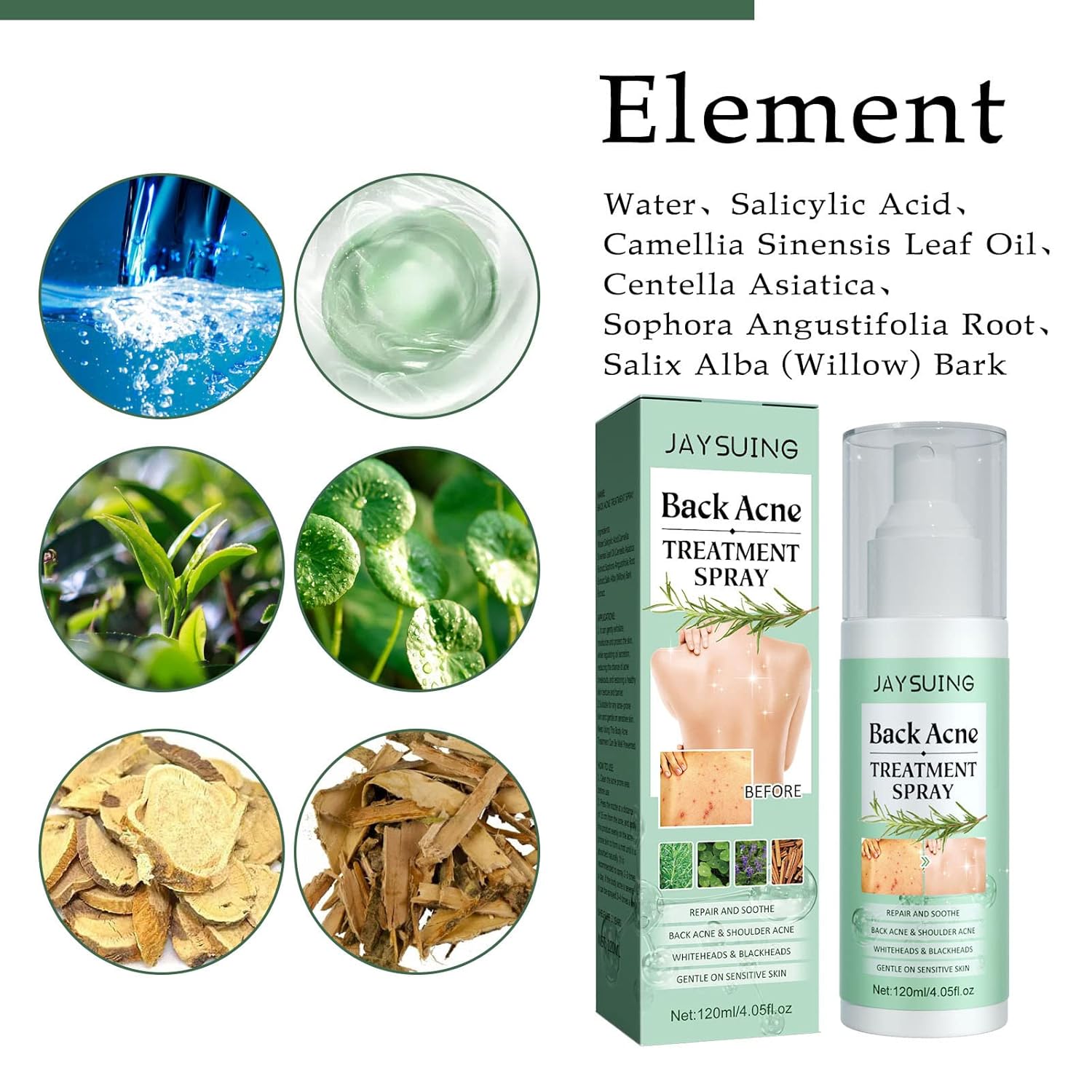
Proper Hygiene Practices
- Shower promptly after sweating or exercising
- Use non-comedogenic, oil-free body washes
- Avoid harsh scrubbing, which can irritate the skin
- Change out of sweaty clothes as soon as possible
Clothing Choices
Opt for loose-fitting, breathable fabrics like cotton to reduce friction and allow the skin to breathe. Avoid tight, synthetic materials that can trap sweat and bacteria against the skin.
Diet and Nutrition
While the link between diet and acne is still being studied, some individuals may find that certain foods exacerbate their acne. Consider keeping a food diary to identify potential triggers, and focus on a balanced diet rich in fruits, vegetables, and whole grains.
Stress Management
Stress can contribute to hormonal imbalances that may worsen acne. Incorporate stress-reducing activities into your routine, such as meditation, yoga, or regular exercise.
Can dietary supplements help with back acne?
Some studies suggest that certain supplements, such as zinc, omega-3 fatty acids, and probiotics, may have beneficial effects on acne. However, it’s important to consult with a healthcare professional before starting any new supplement regimen, as they can interact with medications or have unintended side effects.

Natural Remedies for Back Acne
While scientific evidence is limited, some natural remedies may help alleviate back acne symptoms:
Tea Tree Oil
Tea tree oil has antimicrobial properties that may help fight acne-causing bacteria. Dilute tea tree oil with a carrier oil before applying to the skin to avoid irritation.
Aloe Vera
Aloe vera has anti-inflammatory properties that may help soothe irritated skin and reduce redness associated with acne.
Apple Cider Vinegar
Apple cider vinegar may help balance the skin’s pH and has antimicrobial properties. Dilute it with water before applying to the skin.
Green Tea
Green tea contains antioxidants that may help reduce inflammation and fight bacteria. Apply cooled green tea to the skin using a clean cloth or cotton ball.
Are natural remedies as effective as medical treatments for back acne?
While some natural remedies may provide relief for mild acne, they are generally not as effective as medical treatments for moderate to severe back acne. It’s important to consult with a dermatologist for persistent or severe cases to ensure proper treatment and prevent scarring.
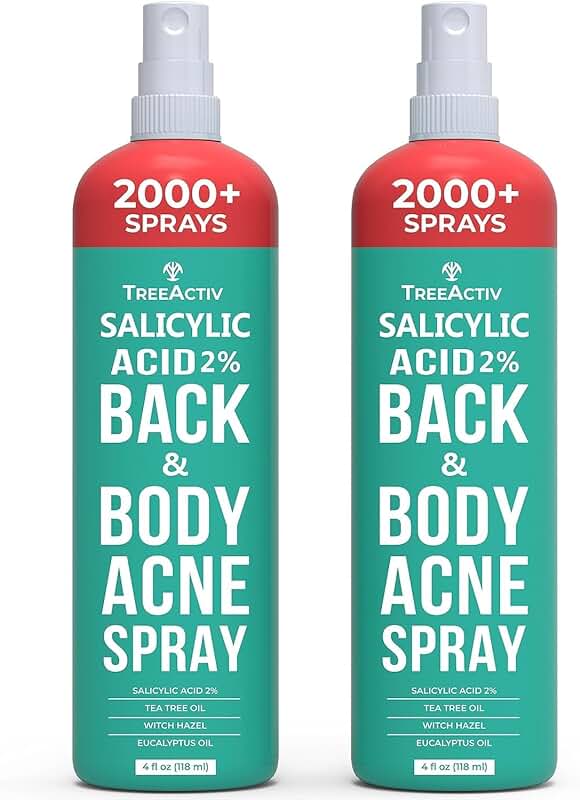
When to Seek Professional Help for Back Acne
While many cases of back acne can be managed with over-the-counter treatments and lifestyle changes, there are situations where professional help is necessary:
- Severe or cystic acne that doesn’t respond to OTC treatments
- Acne that causes significant emotional distress or affects self-esteem
- Development of acne scars or hyperpigmentation
- Sudden onset of severe acne, which may indicate an underlying health issue
- Acne that persists despite consistent use of recommended treatments
A dermatologist can provide a comprehensive evaluation of your skin condition, identify any underlying factors contributing to your back acne, and develop a personalized treatment plan to help you achieve clearer skin.
What should you expect during a dermatologist consultation for back acne?
During a dermatologist consultation for back acne, you can expect the following:
- A thorough examination of your skin
- Discussion of your medical history and current skincare routine
- Evaluation of potential triggers or contributing factors
- Explanation of treatment options tailored to your specific case
- Recommendations for skincare products and lifestyle modifications
- Potential prescription of medications or advanced treatments if necessary
Remember that treating back acne often requires patience and consistency. It may take several weeks or months to see significant improvement, so it’s important to follow your dermatologist’s recommendations and maintain open communication about your progress and any concerns.
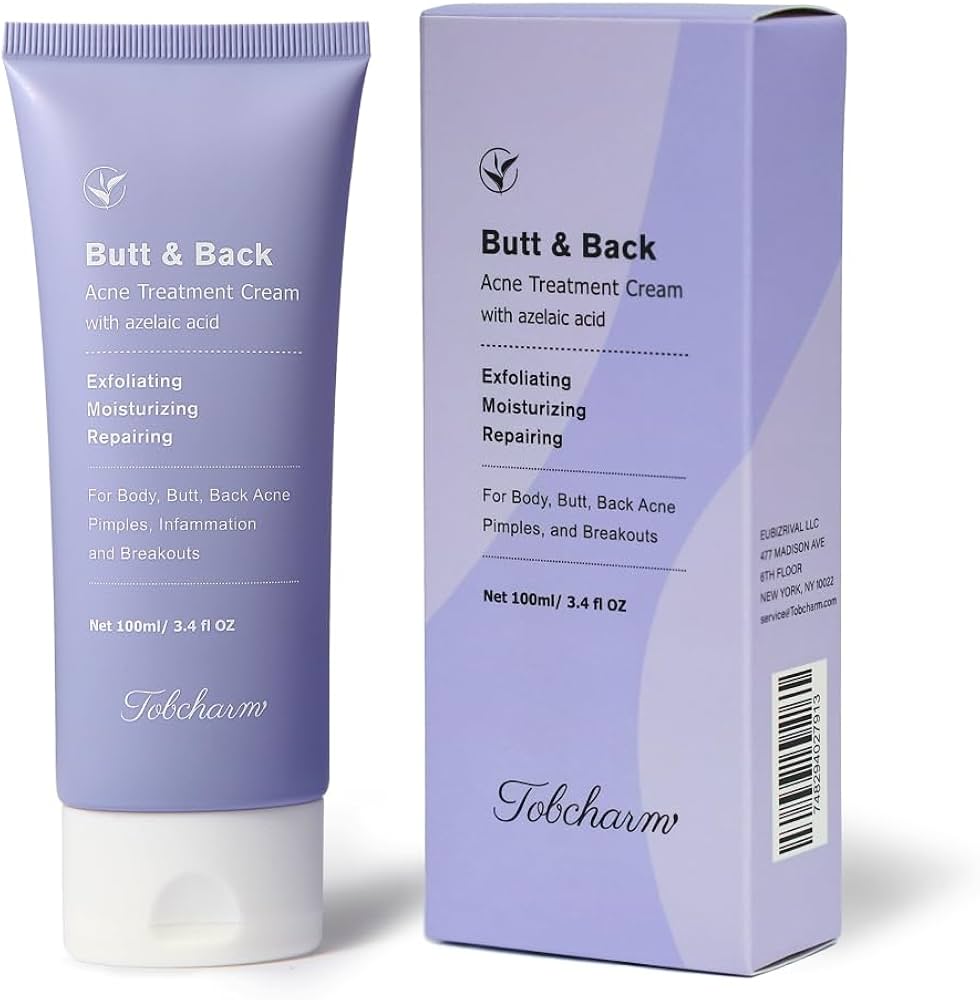
How to get rid of it and how to prevent it
We include products we think are useful for our readers. If you buy through links on this page, we may earn a small commission Here’s our process.
Medical News Today only shows you brands and products that we stand behind.
Our team thoroughly researches and evaluates the recommendations we make on our site. To establish that the product manufacturers addressed safety and efficacy standards, we:
- Evaluate ingredients and composition: Do they have the potential to cause harm?
- Fact-check all health claims: Do they align with the current body of scientific evidence?
- Assess the brand: Does it operate with integrity and adhere to industry best practices?
We do the research so you can find trusted products for your health and wellness.
Read more about our vetting process.
Was this helpful?
Acne is a common condition that typically develops in areas of skin with a lot of oil-producing glands, such as the face, chest, and back. Cleansers, medications, and laser therapy are just some ways of treating it.
Cleansers, medications, and laser therapy are just some ways of treating it.
Back acne, or “backne,” may involve blackheads, whiteheads, or pus-filled bumps called cysts.
The treatment for back acne depends on its severity and may involve over-the-counter (OTC) products, prescription medications, or treatments such as light therapy.
This article looks at what back acne is, what causes it, and how to treat it.
Back acne refers to pimples or cysts on the back. It can involve:
- Blackheads: Each bump has a dark dot in its center.
- Whiteheads: Each bump has a white center.
- Papules: Each small bump has no distinct “head.”
- Cysts: These painful or tender lumps look similar to boils and are a severe form of acne.
Back acne is not a specific medical condition, but it has some unique challenges when compared to acne on the face. For example, it can be more difficult to see and reach back acne to apply treatments.
Why does acne occur on the back?
Like the chest and face, the back has a high density of sebaceous glands. These produce sebum, an oily substance that forms a protective coating for the skin.
Sebaceous glands are attached to hair follicles or pores. If sebum or dead skin cells clog a pore, it can cause a blockage. This blockage may lead to inflammation or trap bacteria in the pore. This is how acne lesions develop.
A type of yeast, Malassezia, can also cause lesions that look similar to acne. The yeast tends to overgrow in humid, sweaty environments. Because clothing, backpacks, and slings often cover the back, it can be an ideal environment for this microbe to grow.
If the yeast gets into the hair follicles, it can cause a condition known as pityrosporum folliculitis. If antibacterial treatments have not worked for back acne, a person may have pityrosporum folliculitis instead.
Below is a range of OTC and prescription treatments a person can consider.
Cleanser
According to the American Academy of Dermatology Association (AAD), people with mild-to-moderate back acne may benefit from combining acne-friendly skin care with OTC products that target the lesions. Individuals with more severe back acne may need prescription drugs.
A person should wash the skin with a mild, non-irritating cleanser every day and after getting sweaty. They should also avoid harsh soaps and astringents and keep from scrubbing the acne — this increases the inflammation.
When acne flares up, people can use a benzoyl peroxide wash. This ingredient kills bacteria and helps reduce lesions. It works best when a person leaves the wash on their skin for a few minutes before rinsing it away. This is because the skin on the back is thicker than on the face, so it may need extra time to absorb.
The AAD writes that a concentration of around 5.3% is less likely to cause side effects such as irritation, dryness, and peeling.
A person can consider Differin Daily Deep Cleanser, which contains 5% benzoyl peroxide. This product is suitable for sensitive skin, and a 4 fluid ounce (fl oz) bottle costs $12.47.
This product is suitable for sensitive skin, and a 4 fluid ounce (fl oz) bottle costs $12.47.
SHOP NOW
Retinoids
To reduce acne, a person might also try a skin care product that contains 0.1% retinoid in addition to using a benzoyl peroxide face wash. Many OTC creams contain retinoids.
Another option is adapalene gel. Doctors recommend using this after showering and before going to sleep.
An applicator can help a person apply treatments to difficult-to-reach parts of the back.
One adapalene product a person can consider is the La Roche Posay Effaclear 0.1% Adapalene Gel, which is suitable for everyday use. The company writes it is suitable for sensitive skin and works to improve cell turnover, which removes and prevents dead skin cells from clogging the pores.
A 1.6 oz tube costs $30.99.
SHOP NOW
Moisturizer
If the skin on the back feels dry or tight, particularly after showering or bathing, a person might use an oil-free moisturizer. Look for products that are labeled “non-comedogenic.” This means that they do not clog pores.
Look for products that are labeled “non-comedogenic.” This means that they do not clog pores.
The CeraVe Daily Moisturizing Lotion for Dry Skin aims to hydrate the skin with hyaluronic acid and restore the skin’s protective barrier with ceramides. It is non-comedogenic and suitable for acne-prone skin.
A person can use this moisturizer daily, and a 19 fl oz bottle costs $18.37.
SHOP NOW
Sunscreen
Sun exposure can make acne lesions darker and more noticeable. It can also cause them to last longer. The AAD recommends a person uses a non-comedogenic sunscreen with an SPF of 30 or above whenever a person has their back exposed.
Oral contraceptives
If a person’s acne seems linked to the menstrual cycle, they may wish to consider trying oral contraceptives, which is an effective treatment in females.
Although hormonal acne is not a term used by doctors, hormones can play a part in the formation of acne. During puberty, rising testosterone levels can increase sebum production, and conditions such as polycystic ovary syndrome (PCOS) can cause an overproduction of androgens like testosterone.
Oral contraceptives can decrease androgen levels.
However, oral contraceptives often have side effects and may not always be effective in managing acne.
A person should speak to a doctor to understand whether oral contraceptives will be effective and safe for them to use. They should also continue to work with a dermatologist and keep up their skincare routine while using birth control for acne.
Oral antibiotics
Drugs such as doxycycline and erythromycin can reduce the amount of acne-causing bacteria on the skin. A dermatologist will likely recommend the shortest possible dosage because overuse can lead to antibiotic resistance, and antibiotics can kill healthy bacteria in the gut.
Isotretinoin
This medication aims to treat excessive oil, inflammation, clogged pores, and bacteria.
According to the AAD, 85% of people who take isotretinoin experience permanent clearing of acne after one course. The common side effects can include dry skin, eyes, nose, and mouth, itching, and headaches.
Severe side effects include suicidal thoughts, aggression, difficulty moving the limbs, and severe skin rash. However, these side effects are rare and occur in less than 1 out of 1,000 people.
A person should talk with a doctor about whether isotretinoin is right for them.
Antiandrogen therapy
Antiandrogen involves taking medications that suppress testosterone, such as cyproterone acetate and ethinylestradiol or spironolactone.
Dermatologists may consider it for females who do not respond to oral contraceptives or have polycystic ovary syndrome (PCOS).
Light and laser therapy
A dermatologist may recommend and perform laser or light therapy for acne. This involves exposing the skin to a special type of light during regular sessions for a set period.
There are different types of light therapy:
- Red, blue, or infrared light therapy can treat pimples but not whiteheads, blackheads, cysts, or nodules.
- Photopneumatic therapy can help unclog pores — treating whiteheads and blackheads but not cysts.

- Photodynamic therapy can successfully treat severe acne, but it is more expensive.
- At-home light therapy devices can treat pimples, but the light is less intense than the one a dermatologist uses.
For lesions that leave noticeable scars, a dermatologist can use procedures such as laser treatments, microneedling, and chemical peels to reduce their appearance.
People must visit dermatologists or plastic surgeons with the appropriate qualifications and experience for treating acne and reducing scars. Visiting someone or a clinic that does not have such expertise and the best equipment can result in disappointment and more harm.
Below is an overview of the treatments included in this article.
| Prescription-only | Suitable for long-term prevention and care | |
|---|---|---|
| Cleanser | no | yes |
| Retinoids | no | yes |
| Moisturizer | no | yes |
| Sunscreen | no | yes |
| Oral contraceptives | yes | depends on the individual |
| Oral antibiotics | yes | no |
| Isotretinoin | yes | no |
| Antiandrogen therapy | no | no |
| Light and laser therapy | no | depends on the individual |
The acne-friendly skin care routine outlined by the AAD can help prevent back acne as well as treat it. A gentle cleanser, non-comedogenic moisturizer, and adequate sun protection can be an effective route for a person to take.
A gentle cleanser, non-comedogenic moisturizer, and adequate sun protection can be an effective route for a person to take.
Other skin care strategies that can prevent or reduce acne and skin irritation include:
- regularly washing bed linens, towels, and pillowcases
- regularly washing clothes, particularly tight-fitting ones, such as bras or binders
- avoiding wearing things that rub against the back, such as backpacks
- exercising in loose-fitting clothes made from natural fibers, such as cotton
- showering and changing clothes immediately after exercise or using cleansing wipes
- washing workout clothes and equipment after each use
Acne affects many people. Certain factors that can contribute to or raise the risk of its development include:
Puberty
Teenagers often develop acne, possibly due to the increase in testosterone during puberty. Testosterone plays a key role in stimulating the growth and development of the testicles and penis in males and maintaining bone and muscle strength in females.
Experts believe that testosterone causes the sebaceous glands to overproduce sebum, increasing the likelihood of blocked pores. Acne may improve when the person enters adulthood.
Family history
A person is more likely to develop acne if one or both parents have had it.
If both parents had acne, a person might be more likely to develop it at an early age. If a person’s parents had acne as adults, the person might also be more likely to have it during adulthood.
Sex
Males are more likely to develop acne than females, according to a 2022 overview of acne.
Other triggers
Other factors that may cause acne or trigger outbreaks include:
- certain medications, such as steroids and some forms of hormonal birth control
- cosmetic products that are not non-comedogenic
- regularly wearing items, such as backpacks, that rub or irritate affected areas of the skin
There is also some evidence that dietary factors can worsen or improve acne. According to the AAD, some studies have shown that a low glycemic index diet reduces acne. This involves eating “slow-burning” carbohydrates, which do not cause blood sugar to spike, and avoiding unhealthy foods such as bread, doughnuts, and potatoes.
According to the AAD, some studies have shown that a low glycemic index diet reduces acne. This involves eating “slow-burning” carbohydrates, which do not cause blood sugar to spike, and avoiding unhealthy foods such as bread, doughnuts, and potatoes.
Also, some studies have found an association between cow’s milk and higher rates of acne. However, the link is unclear, and there is no evidence that other dairy products, such as yogurt or cheese, cause acne.
Below are answers to the top frequently asked questions about back acne.
Will back acne go away by itself?
The UK National Health Service (NHS) writes that acne often goes away when a person is in their mid-20s.
However, a person should talk with a doctor about their back acne to discuss treatment and how to manage acne at home to reduce the risk of scarring.
Does scrubbing your back help acne?
No. Scrubbing acne can increase inflammation, cause scratches or wounds, and increase the risk of scarring. People can gently exfoliate their skin once a week to remove dead skin cells and dirt from their back.
People can gently exfoliate their skin once a week to remove dead skin cells and dirt from their back.
Should I moisturize back acne?
Yes. Using a gentle, non-comedogenic, and fragrance-free moisturizer can help to keep the skin hydrated. This helps repair the skin’s moisture barrier, which acne can impair. Dry skin can cause an overproduction of sebum, which contributes to the formation of acne.
Back acne, or backne, occurs when dead skin cells and oil from the sebaceous glands block pores, causing inflammation. It can be harder to see and reach acne on the back in order to treat it. However, a range of effective OTC and prescription treatments are available, and using an applicator can help.
To prevent acne and help to reduce it, a person should adopt a regular, gentle skin care routine. They should also change out of sweaty clothing after exercising, change bedsheets regularly, and avoid harsh soaps and comedogenic products.
In addition, back acne can worsen if a person regularly wears clothing or accessories that rub against their back, such as a tight-fitting bra, a backpack, or binders.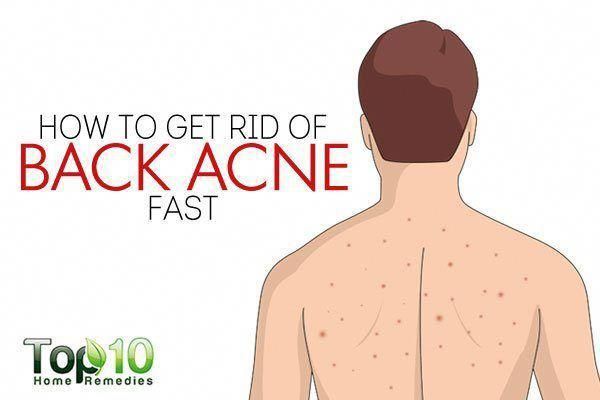
A person should speak with a dermatologist about severe or persistent acne. Some acne-like lesions result from different health issues, which require different treatments.
Read the article in Spanish.
How to get rid of it and how to prevent it
We include products we think are useful for our readers. If you buy through links on this page, we may earn a small commission Here’s our process.
Medical News Today only shows you brands and products that we stand behind.
Our team thoroughly researches and evaluates the recommendations we make on our site. To establish that the product manufacturers addressed safety and efficacy standards, we:
- Evaluate ingredients and composition: Do they have the potential to cause harm?
- Fact-check all health claims: Do they align with the current body of scientific evidence?
- Assess the brand: Does it operate with integrity and adhere to industry best practices?
We do the research so you can find trusted products for your health and wellness.
Read more about our vetting process.
Was this helpful?
Acne is a common condition that typically develops in areas of skin with a lot of oil-producing glands, such as the face, chest, and back. Cleansers, medications, and laser therapy are just some ways of treating it.
Back acne, or “backne,” may involve blackheads, whiteheads, or pus-filled bumps called cysts.
The treatment for back acne depends on its severity and may involve over-the-counter (OTC) products, prescription medications, or treatments such as light therapy.
This article looks at what back acne is, what causes it, and how to treat it.
Back acne refers to pimples or cysts on the back. It can involve:
- Blackheads: Each bump has a dark dot in its center.
- Whiteheads: Each bump has a white center.
- Papules: Each small bump has no distinct “head.”
- Cysts: These painful or tender lumps look similar to boils and are a severe form of acne.

Back acne is not a specific medical condition, but it has some unique challenges when compared to acne on the face. For example, it can be more difficult to see and reach back acne to apply treatments.
Why does acne occur on the back?
Like the chest and face, the back has a high density of sebaceous glands. These produce sebum, an oily substance that forms a protective coating for the skin.
Sebaceous glands are attached to hair follicles or pores. If sebum or dead skin cells clog a pore, it can cause a blockage. This blockage may lead to inflammation or trap bacteria in the pore. This is how acne lesions develop.
A type of yeast, Malassezia, can also cause lesions that look similar to acne. The yeast tends to overgrow in humid, sweaty environments. Because clothing, backpacks, and slings often cover the back, it can be an ideal environment for this microbe to grow.
If the yeast gets into the hair follicles, it can cause a condition known as pityrosporum folliculitis. If antibacterial treatments have not worked for back acne, a person may have pityrosporum folliculitis instead.
If antibacterial treatments have not worked for back acne, a person may have pityrosporum folliculitis instead.
Below is a range of OTC and prescription treatments a person can consider.
Cleanser
According to the American Academy of Dermatology Association (AAD), people with mild-to-moderate back acne may benefit from combining acne-friendly skin care with OTC products that target the lesions. Individuals with more severe back acne may need prescription drugs.
A person should wash the skin with a mild, non-irritating cleanser every day and after getting sweaty. They should also avoid harsh soaps and astringents and keep from scrubbing the acne — this increases the inflammation.
When acne flares up, people can use a benzoyl peroxide wash. This ingredient kills bacteria and helps reduce lesions. It works best when a person leaves the wash on their skin for a few minutes before rinsing it away. This is because the skin on the back is thicker than on the face, so it may need extra time to absorb.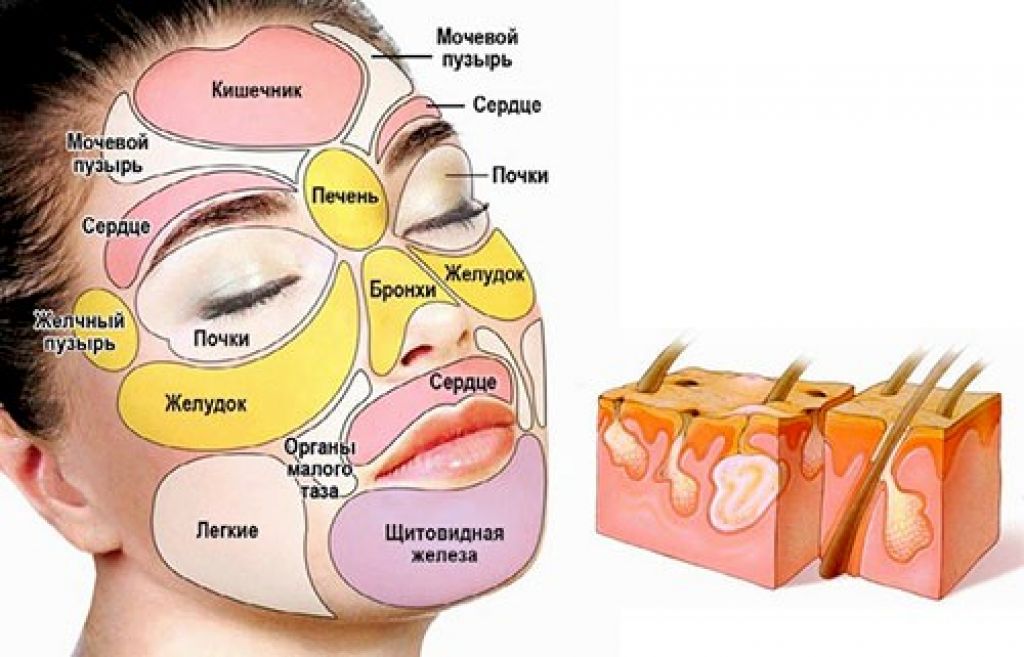
The AAD writes that a concentration of around 5.3% is less likely to cause side effects such as irritation, dryness, and peeling.
A person can consider Differin Daily Deep Cleanser, which contains 5% benzoyl peroxide. This product is suitable for sensitive skin, and a 4 fluid ounce (fl oz) bottle costs $12.47.
SHOP NOW
Retinoids
To reduce acne, a person might also try a skin care product that contains 0.1% retinoid in addition to using a benzoyl peroxide face wash. Many OTC creams contain retinoids.
Another option is adapalene gel. Doctors recommend using this after showering and before going to sleep.
An applicator can help a person apply treatments to difficult-to-reach parts of the back.
One adapalene product a person can consider is the La Roche Posay Effaclear 0.1% Adapalene Gel, which is suitable for everyday use. The company writes it is suitable for sensitive skin and works to improve cell turnover, which removes and prevents dead skin cells from clogging the pores.
A 1.6 oz tube costs $30.99.
SHOP NOW
Moisturizer
If the skin on the back feels dry or tight, particularly after showering or bathing, a person might use an oil-free moisturizer. Look for products that are labeled “non-comedogenic.” This means that they do not clog pores.
The CeraVe Daily Moisturizing Lotion for Dry Skin aims to hydrate the skin with hyaluronic acid and restore the skin’s protective barrier with ceramides. It is non-comedogenic and suitable for acne-prone skin.
A person can use this moisturizer daily, and a 19 fl oz bottle costs $18.37.
SHOP NOW
Sunscreen
Sun exposure can make acne lesions darker and more noticeable. It can also cause them to last longer. The AAD recommends a person uses a non-comedogenic sunscreen with an SPF of 30 or above whenever a person has their back exposed.
Oral contraceptives
If a person’s acne seems linked to the menstrual cycle, they may wish to consider trying oral contraceptives, which is an effective treatment in females.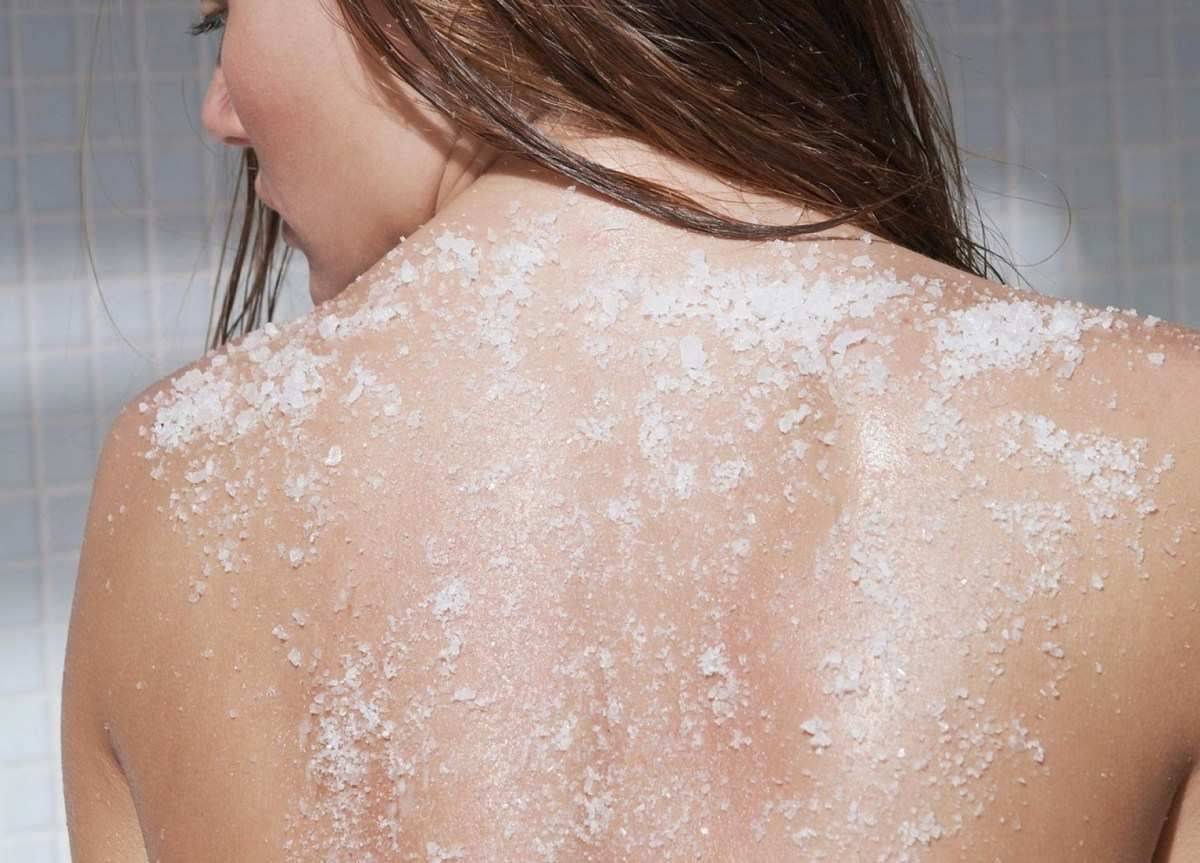
Although hormonal acne is not a term used by doctors, hormones can play a part in the formation of acne. During puberty, rising testosterone levels can increase sebum production, and conditions such as polycystic ovary syndrome (PCOS) can cause an overproduction of androgens like testosterone.
Oral contraceptives can decrease androgen levels.
However, oral contraceptives often have side effects and may not always be effective in managing acne.
A person should speak to a doctor to understand whether oral contraceptives will be effective and safe for them to use. They should also continue to work with a dermatologist and keep up their skincare routine while using birth control for acne.
Oral antibiotics
Drugs such as doxycycline and erythromycin can reduce the amount of acne-causing bacteria on the skin. A dermatologist will likely recommend the shortest possible dosage because overuse can lead to antibiotic resistance, and antibiotics can kill healthy bacteria in the gut.
Isotretinoin
This medication aims to treat excessive oil, inflammation, clogged pores, and bacteria.
According to the AAD, 85% of people who take isotretinoin experience permanent clearing of acne after one course. The common side effects can include dry skin, eyes, nose, and mouth, itching, and headaches.
Severe side effects include suicidal thoughts, aggression, difficulty moving the limbs, and severe skin rash. However, these side effects are rare and occur in less than 1 out of 1,000 people.
A person should talk with a doctor about whether isotretinoin is right for them.
Antiandrogen therapy
Antiandrogen involves taking medications that suppress testosterone, such as cyproterone acetate and ethinylestradiol or spironolactone.
Dermatologists may consider it for females who do not respond to oral contraceptives or have polycystic ovary syndrome (PCOS).
Light and laser therapy
A dermatologist may recommend and perform laser or light therapy for acne. This involves exposing the skin to a special type of light during regular sessions for a set period.
This involves exposing the skin to a special type of light during regular sessions for a set period.
There are different types of light therapy:
- Red, blue, or infrared light therapy can treat pimples but not whiteheads, blackheads, cysts, or nodules.
- Photopneumatic therapy can help unclog pores — treating whiteheads and blackheads but not cysts.
- Photodynamic therapy can successfully treat severe acne, but it is more expensive.
- At-home light therapy devices can treat pimples, but the light is less intense than the one a dermatologist uses.
For lesions that leave noticeable scars, a dermatologist can use procedures such as laser treatments, microneedling, and chemical peels to reduce their appearance.
People must visit dermatologists or plastic surgeons with the appropriate qualifications and experience for treating acne and reducing scars. Visiting someone or a clinic that does not have such expertise and the best equipment can result in disappointment and more harm.
Below is an overview of the treatments included in this article.
| Prescription-only | Suitable for long-term prevention and care | |
|---|---|---|
| Cleanser | no | yes |
| Retinoids | no | yes |
| Moisturizer | no | yes |
| Sunscreen | no | yes |
| Oral contraceptives | yes | depends on the individual |
| Oral antibiotics | yes | no |
| Isotretinoin | yes | no |
| Antiandrogen therapy | no | no |
| Light and laser therapy | no | depends on the individual |
The acne-friendly skin care routine outlined by the AAD can help prevent back acne as well as treat it. A gentle cleanser, non-comedogenic moisturizer, and adequate sun protection can be an effective route for a person to take.
Other skin care strategies that can prevent or reduce acne and skin irritation include:
- regularly washing bed linens, towels, and pillowcases
- regularly washing clothes, particularly tight-fitting ones, such as bras or binders
- avoiding wearing things that rub against the back, such as backpacks
- exercising in loose-fitting clothes made from natural fibers, such as cotton
- showering and changing clothes immediately after exercise or using cleansing wipes
- washing workout clothes and equipment after each use
Acne affects many people. Certain factors that can contribute to or raise the risk of its development include:
Puberty
Teenagers often develop acne, possibly due to the increase in testosterone during puberty. Testosterone plays a key role in stimulating the growth and development of the testicles and penis in males and maintaining bone and muscle strength in females.
Experts believe that testosterone causes the sebaceous glands to overproduce sebum, increasing the likelihood of blocked pores.![]() Acne may improve when the person enters adulthood.
Acne may improve when the person enters adulthood.
Family history
A person is more likely to develop acne if one or both parents have had it.
If both parents had acne, a person might be more likely to develop it at an early age. If a person’s parents had acne as adults, the person might also be more likely to have it during adulthood.
Sex
Males are more likely to develop acne than females, according to a 2022 overview of acne.
Other triggers
Other factors that may cause acne or trigger outbreaks include:
- certain medications, such as steroids and some forms of hormonal birth control
- cosmetic products that are not non-comedogenic
- regularly wearing items, such as backpacks, that rub or irritate affected areas of the skin
There is also some evidence that dietary factors can worsen or improve acne. According to the AAD, some studies have shown that a low glycemic index diet reduces acne. This involves eating “slow-burning” carbohydrates, which do not cause blood sugar to spike, and avoiding unhealthy foods such as bread, doughnuts, and potatoes.
Also, some studies have found an association between cow’s milk and higher rates of acne. However, the link is unclear, and there is no evidence that other dairy products, such as yogurt or cheese, cause acne.
Below are answers to the top frequently asked questions about back acne.
Will back acne go away by itself?
The UK National Health Service (NHS) writes that acne often goes away when a person is in their mid-20s.
However, a person should talk with a doctor about their back acne to discuss treatment and how to manage acne at home to reduce the risk of scarring.
Does scrubbing your back help acne?
No. Scrubbing acne can increase inflammation, cause scratches or wounds, and increase the risk of scarring. People can gently exfoliate their skin once a week to remove dead skin cells and dirt from their back.
Should I moisturize back acne?
Yes. Using a gentle, non-comedogenic, and fragrance-free moisturizer can help to keep the skin hydrated. This helps repair the skin’s moisture barrier, which acne can impair. Dry skin can cause an overproduction of sebum, which contributes to the formation of acne.
This helps repair the skin’s moisture barrier, which acne can impair. Dry skin can cause an overproduction of sebum, which contributes to the formation of acne.
Back acne, or backne, occurs when dead skin cells and oil from the sebaceous glands block pores, causing inflammation. It can be harder to see and reach acne on the back in order to treat it. However, a range of effective OTC and prescription treatments are available, and using an applicator can help.
To prevent acne and help to reduce it, a person should adopt a regular, gentle skin care routine. They should also change out of sweaty clothing after exercising, change bedsheets regularly, and avoid harsh soaps and comedogenic products.
In addition, back acne can worsen if a person regularly wears clothing or accessories that rub against their back, such as a tight-fitting bra, a backpack, or binders.
A person should speak with a dermatologist about severe or persistent acne. Some acne-like lesions result from different health issues, which require different treatments.
Read the article in Spanish.
causes and effective remedies
Contents
- 1 Why do back pimples appear and how to deal with them?
- 1.1 Back acne problem: causes and effective methods of treatment
- 1.1.1 Back acne causes:
- 1.1.2 Back acne treatment methods:
- 1.2 What is back acne ?
- 1.3 What causes acne on the back?
- 1.4 The role of hormonal levels in the occurrence of acne on the back 9Back acne cabbage soup on the back: when to see a dermatologist
- 1.10 Medicines to fight back acne
- 1.11 Beauty treatments to get rid of back acne
- 1.11.1 1. Going to a beauty salon
- 1.11.2 2. Peeling
- 1.11.3 3. Hardware cosmetology
- 1.11.4 4. Mesotherapy
- 1.12 Q&A:
- 1.12.0.1 What are pimples on the back and where do they come from?
- 1.12.0.2 How to get rid of back acne?
- 1.12.0.3 What foods in the diet contribute to acne on the back?
- 1.
 12.0.4 Can pimples on the back be a sign of a serious illness?
12.0.4 Can pimples on the back be a sign of a serious illness? - 1.12.0.5 What kind of cosmetics should be used in case of acne on the back?
- 1.12.0.6 Which sports activities can cause acne on the back?
- 1.13 Tips for preventing back acne
- 1.13.1 Proper nutrition
- 1.13.2 Skin care
- 1.13.3 Regular exercise 9 0010
- 1.13.4 Avoiding stressful situations
- 1.14 Related videos:
- 1.1 Back acne problem: causes and effective methods of treatment
Find out why back acne occurs and what treatment and prevention methods are effective. Get expert advice on keeping your back clean and healthy.
The skin is our largest organ and has many functions, including protecting our body from harmful substances and connecting us to the outside world. However, when we experience skin problems such as acne, it can seriously affect our self-esteem and overall physical and emotional health.
And, unfortunately, back acne is a common problem for many people, especially teenagers. They can appear at any age and in any circumstance, but most often occur in those who experience hormonal imbalances, stress, changes in diet, and poor hygiene.
They can appear at any age and in any circumstance, but most often occur in those who experience hormonal imbalances, stress, changes in diet, and poor hygiene.
But don’t despair! In this article, we look at the causes of back acne and effective treatments so you can get rid of it and enjoy healthy skin throughout your life.
Back acne problem: causes and effective methods of struggle
Back acne causes:
1. Wrong back skin care.
2. Excessive secretion of sebum.
3. Hormonal imbalance in the body.
4. Stress and irregular sleep.
5. Some medications and the use of aggressive cosmetics.
No
100%
Ways to deal with acne on the back:
- Proper skin care. Washing your back regularly with shower gel without SLS and SLES, as well as using scrubs and masks to cleanse the skin, will help get rid of acne.
- Healthy lifestyle. Regular exercise, a balanced diet and adequate sleep will improve skin condition and help prevent back acne.

- Treatment of hormonal disorders. Seeing an endocrinologist and undergoing a course of treatment can help improve hormonal levels and get rid of back acne.
- Cosmetic procedures. Chemical peels, microneedling, ultrasonic skin cleansing and laser therapy can effectively treat acne and its effects on the skin of the back.
What are pimples on the back?
Back acne is a common problem that occurs in many people, especially during adolescence and adults with oily skin. These are rashes that can be of different sizes and shapes, from small pustules to large cysts and boils.
Pimples on the back can be caused by a variety of causes: excess sebum, clogged pores, poor hygiene, poor diet, stress, and certain skin conditions. The best way to get rid of acne is to determine its cause and eliminate it.
- To prevent acne on your back, you should shower regularly, especially after exercise and wet weather.

- When choosing shower gels and detergents, preference should be given to those containing salicylic acid or benzyl peroxide. They help unclog pores and kill bacteria on the skin.
- To reduce the amount of sebum on the back, avoid fatty and sugary foods, as well as frequent drinking and smoking.
- For severe back acne, see a dermatologist for advice and treatment, including medications and skin care treatments.
What causes acne on the back?
The skin on the back, as well as on the face, contains many small pores that can become clogged with oils, skin cells and dirt, leading to pimples. However, unlike the face, the back is more prone to sweating and improper care, which can lead to more problematic forms of acne.
Other possible causes of back acne include the use of inappropriate skin care products such as oily lotions or creams, clothing that does not allow the skin to breathe, or clothing that is too tight or tight, which can make it difficult for the skin to renew itself naturally.
It is also worth mentioning the psychological factor, when stress and low mood can lead to hormonal imbalance in the body, which in turn can cause acne on the face and back.
- Avoid malnutrition: Eating fatty, sugary and salty foods can lead to hormone imbalances that can exacerbate back acne problems;
- Wash your back regularly using special cleansers that do not leave a greasy residue on the skin;
- Wear loose-fitting clothing made from natural fabrics such as cotton to allow your skin to breathe and avoid clogging pores;
- Do not choose back acne as this can spread bacteria and infections to healthy skin;
- Tune in to positivity, exercise and take care of your health and mental well-being as it can have a positive effect on your skin.
The role of hormonal levels in the occurrence of acne on the back
The appearance of acne on the back can be associated with a change in the level of hormones in the body. An increase in the level of testosterone, a male hormone that is also present in women, can lead to an increase in the production of sebaceous glands in the skin. Increased sebum production can make it difficult to remove it to the outside, which can lead to clogged skin pores. It is the blockage of pores that will cause acne on the back.
An increase in the level of testosterone, a male hormone that is also present in women, can lead to an increase in the production of sebaceous glands in the skin. Increased sebum production can make it difficult to remove it to the outside, which can lead to clogged skin pores. It is the blockage of pores that will cause acne on the back.
An equally significant factor is the change in the level of estrogens – female hormones that in women stimulate the sebaceous glands and the production of sebum. In women who are faced with an abundance of acne on their backs, it is often possible to detect a change in the hormonal background, namely, an increase in testosterone levels and a decrease in estrogen levels.
It should also be noted that hormonal changes in the body can affect our emotional state, and this, in turn, can lead to increased stress levels. Stress, in turn, can stimulate an increase in the level of hormones in the blood, which contributes to the deterioration of the skin.
So, the hormonal background plays an important role in the occurrence of acne on the back. To reduce the severity of acne on the back, it is necessary to balance the level of hormones in the body and avoid stressful situations as much as possible.
Dietary Factors Contributing to Back Acne
Generally, the risk of back acne increases with the consumption of large amounts of fatty, sugary and salty foods. Such products contribute to increased activity of the sebaceous glands, which leads to a stagnant process and the appearance of inflammatory elements on the skin.
In addition, an unhealthy diet, poor in vitamins and trace elements, can reduce immunity and make the skin more vulnerable to bacterial penetration, which leads to the formation of acne.
Frequent alcohol consumption and smoking also negatively affect the skin by increasing the production of fatty acids and causing inflammation on the surface of the skin.
It is important to properly balance your diet by increasing your intake of vegetables, fruits, protein foods and fluids. It is also worth giving up bad habits and, if possible, avoiding too fatty, sweet and salty foods to maintain healthy skin on the back.
Effects of washing on skin health
When it comes to skin health, many people often forget that washing clothes can also have a huge impact on the skin. Even though washing is an essential part of life, using it incorrectly or inappropriately can cause skin health problems.
Some of the most common ways washing clothes can affect skin health are through the use of too strong detergents, frequent laundering of clothes, rough fabrics, and tedious sun drying of clothes. All of these factors can lead to skin irritation, blocked pores, damage to the skin barrier, and possibly back acne.
However, to reduce the risks of washing your skin, some precautions can be taken, such as using mild detergents, reducing the number of washes, choosing softer fabrics when shopping for clothes, and drying clothes gently in the shade.
In conclusion, washing clothes is an essential part of our lives, but it is also a factor that can affect the health of our skin. Being careful when using detergents and laundry can be the key to maintaining healthy skin and getting rid of back acne.
Ways to deal with acne on the back
Eliminating acne on the back is not an easy task and requires time and patience. Carrying out regular back skin care will help minimize the risk of new acne and reduce the number of existing ones.
- Wash your back regularly with a special gel or soap that does not dry out the skin or cause irritation.
- The most effective gel or cream contains salicylic acid, which exfoliates dead cells and prevents clogged pores.
- Avoid wearing very tight clothing as it can damage the skin, cause irritation and pimples.
- Get regular exercise and exercise as it helps our body flush out toxins and excess fluids.
- Watch your diet, it should be rich in vegetables, fruits and healthy proteins, and also not contain excess fats and carbohydrates.

- See a beautician for a professional back cleaning that will help get rid of a lot of pimples.
Persistence and patience in the fight against back acne will be rewarded with clear and healthy skin that you will be proud of.
Proper back skin care
One of the key points in the fight against acne on the back is proper skin care. It is important to remember that the skin on the back has its own characteristics and requires special attention.
The first step to healthy skin is regular hygiene. Every day, morning and evening, gently cleanse the skin with a special gel or soap that does not contain aggressive ingredients.
After cleansing the skin, do not forget to moisturize it. To do this, use light lotions, gel-like creams or sprays. It is not advised to use heavy oils and creams, they can clog pores and lead to the appearance of new acne.
- It is important to avoid chafing the skin with clothing and accessories.

- Choose clothes made from natural fabrics, they are more breathable and do not lead to perspiration.
- Do not use hard sponges or brushes, they can damage the skin and aggravate the problem.
Simple rules for back skin care:
| 1. Remember about hygiene: regularly cleansing and moisturizing the skin. |
| 2. Avoid rubbing with clothing and the use of hard sponges and brushes. |
| 3. Dress in natural clothing. |
By following these simple skin care tips, you’ll achieve healthy, beautiful back skin, as well as get rid of acne and other blemishes that can harm your skin.
Diagnosis of acne on the back: when to see a dermatologist
As a rule, acne on the back requires a mandatory visit to a dermatologist if they do not disappear for more than two weeks. In addition, there are several other signs that may indicate a more serious problem, and the appearance of which is also a reason to go to the doctor.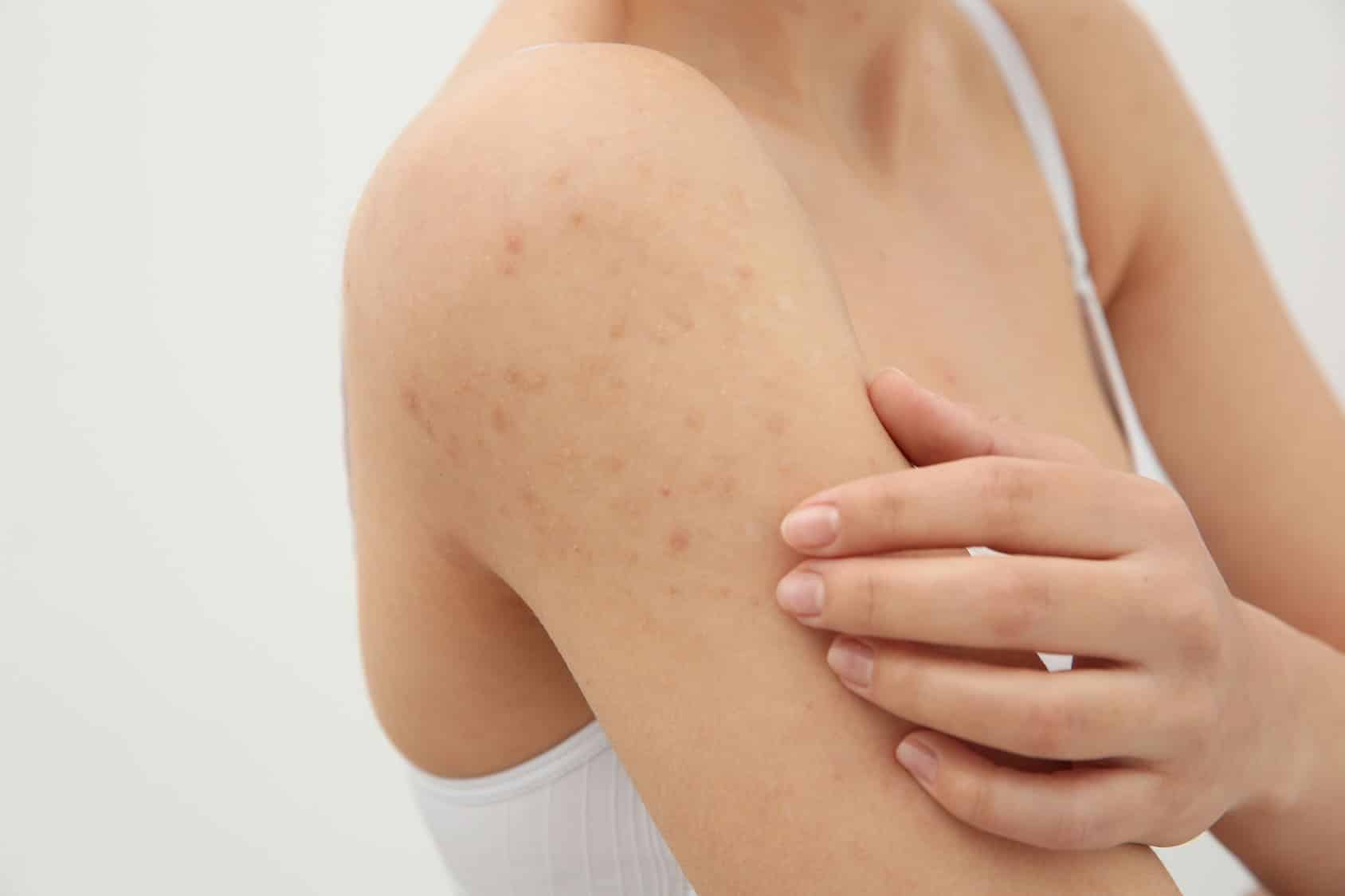
- If the pimple on the back is very painful and is a large swelling with red lines or spots, it may be an infected pimple caused by a bacterial infection.
- If you notice acne on your back after taking a new medicine, it may be a side effect and you should contact your doctor.
- If pimples on the back are accompanied by severe itching, fungal infections of the skin may be the cause, requiring treatment with topical and systemic antifungals.
In any case, if you have doubts about the origin of acne on your back, it is better to visit a dermatologist who will diagnose and determine the necessary treatment measures.
Back acne medicines
Back acne treatment may include medicines. However, before proceeding with treatment, it is necessary to consult a dermatologist or cosmetologist.
Various topical preparations can be used to treat acne on the back. They may contain antibiotics, azelaic acid, benzoyl peroxide, salicylic acid, and other active ingredients that help reduce acne on the skin.
Antibiotics are used to kill bacteria that cause inflammation and lead to acne. Azelaic acid, benzoyl peroxide and salicylic acid help dissolve sebaceous plugs and eliminate local inflammation on the skin.
Some drugs, such as retinoids, may be used to treat moderate or severe back acne. They help reduce the size of acne, get rid of blackheads and improve skin tone.
When using medicines to fight acne on the back, you need to pay attention to how you feel and how your skin reacts. If severe itching, redness or tingling occurs, stop using this drug immediately and consult a dermatologist.
Beauty treatment for back acne
1. Visit to a beauty salon
Visit a beauty salon for cleansing treatments: back cleansing, exfoliation, massage and herbal masks. These procedures will improve blood circulation, remove dead skin cells, reduce fatty deposits and remove acne.
2. Peeling
Peeling is a procedure that removes the dead skin layer. To combat acne on the back, you should choose a product with salicylic acid, charcoal, fruit acids and retinol. Sunscreen must be used after the procedure.
To combat acne on the back, you should choose a product with salicylic acid, charcoal, fruit acids and retinol. Sunscreen must be used after the procedure.
3. Hardware cosmetology
Various types of hardware cosmetology are used to get rid of acne on the back. For example, ultrasonic cleaning, laser treatment, vacuum-roller massage, chemical peeling, etc. These procedures are carried out by cosmetologists professionally and efficiently.
4. Mesotherapy
Mesotherapy is an injection of active ingredients into the skin that treats acne, reduces sebum, moisturizes and renews the skin. This method helps to get rid of deep and painful acne.
Q&A:
What are pimples on the back and where do they come from?
Pimples on the back are inflammatory elements of the skin, similar to pimples on the face. They can appear due to increased levels of fats in the body, hormonal imbalance, poor diet, stress, poor hygiene, the use of low-quality cosmetics and general health.
How to get rid of acne on the back?
There are several ways to get rid of acne on the back. First, you need to keep your skin clean and shower at least once a day. You should also avoid synthetic clothing and use sheets made from natural fabrics. It is also recommended to eat right, eating more fruits and vegetables, as well as drinking enough water. If these measures do not help, you can consult a dermatologist who will select the appropriate treatment depending on the cause of acne.
What foods in the diet contribute to acne on the back?
According to dermatologists, foods rich in animal fats, sweets and flour products can contribute to the appearance of acne on the back. You should also avoid spicy and fatty foods. On the contrary, it is recommended to consume more fruits, vegetables, greens and protein foods such as chicken, turkey, fish.
Can acne on the back be a sign of a serious illness?
Yes, acne on the back can be a sign of various diseases, such as hormonal, immunological or allergic. They can also be aggravated by diseases of the thyroid gland or the gastrointestinal tract. If acne on the back does not go away or has a pronounced inflammatory process, it is recommended to consult a doctor for an appropriate examination.
They can also be aggravated by diseases of the thyroid gland or the gastrointestinal tract. If acne on the back does not go away or has a pronounced inflammatory process, it is recommended to consult a doctor for an appropriate examination.
What kind of cosmetics should be used in case of acne on the back?
If you have acne on your back, you should avoid cosmetics containing a lot of oil or alcohol, which can aggravate inflammation and cause new acne. It is recommended to use cosmetics containing antiseptics, salicylic acid and benzoyl peroxide, which help reduce inflammation.
Which sports activities can cause acne on the back?
It is believed that playing sports can cause acne on the back. Especially often this effect is observed when doing strength sports such as bodybuilding. This is due to increased levels of testosterone in the body, which can cause increased sebum production. However, exercising has many health benefits, and with good skin hygiene, acne can be minimized.
Tips for preventing acne on the back
Proper nutrition
Avoid fatty, spicy and salty foods. Give preference to fresh vegetables and fruits. The diet should contain protein, useful acids and vitamins. Do not abuse sweets and greasy snacks
Skin care
It is important to keep the skin clean and dry. Take a shower regularly, after physical exertion and work in conditions of high temperature. Use a lipid-free shower gel, wash clothes with hypoallergenic products
Regular exercise
Physical activity helps to eliminate toxins and get rid of superficial layers of dead skin. When visiting the gym or doing other sports, it is recommended to wear loose clothing made from natural fabrics
Avoiding stressful situations
Stress entails various internal disorders of the body associated with the activity of the hormonal system. It can lead to acne on the back and other parts of the body. It is important to rest regularly and sleep at least 7-8 hours a day
Rules for the prevention of acne on the back Item Content
1. | Refuse fatty, spicy and salty foods |
| 2. | |
| 3. | Go to the gym or do other sports |
| 4. | Avoid stressful situations |

/15483-back-acne-and-body-acne-5af1feb88e1b6e003908e58c.png)

 12.0.4 Can pimples on the back be a sign of a serious illness?
12.0.4 Can pimples on the back be a sign of a serious illness?





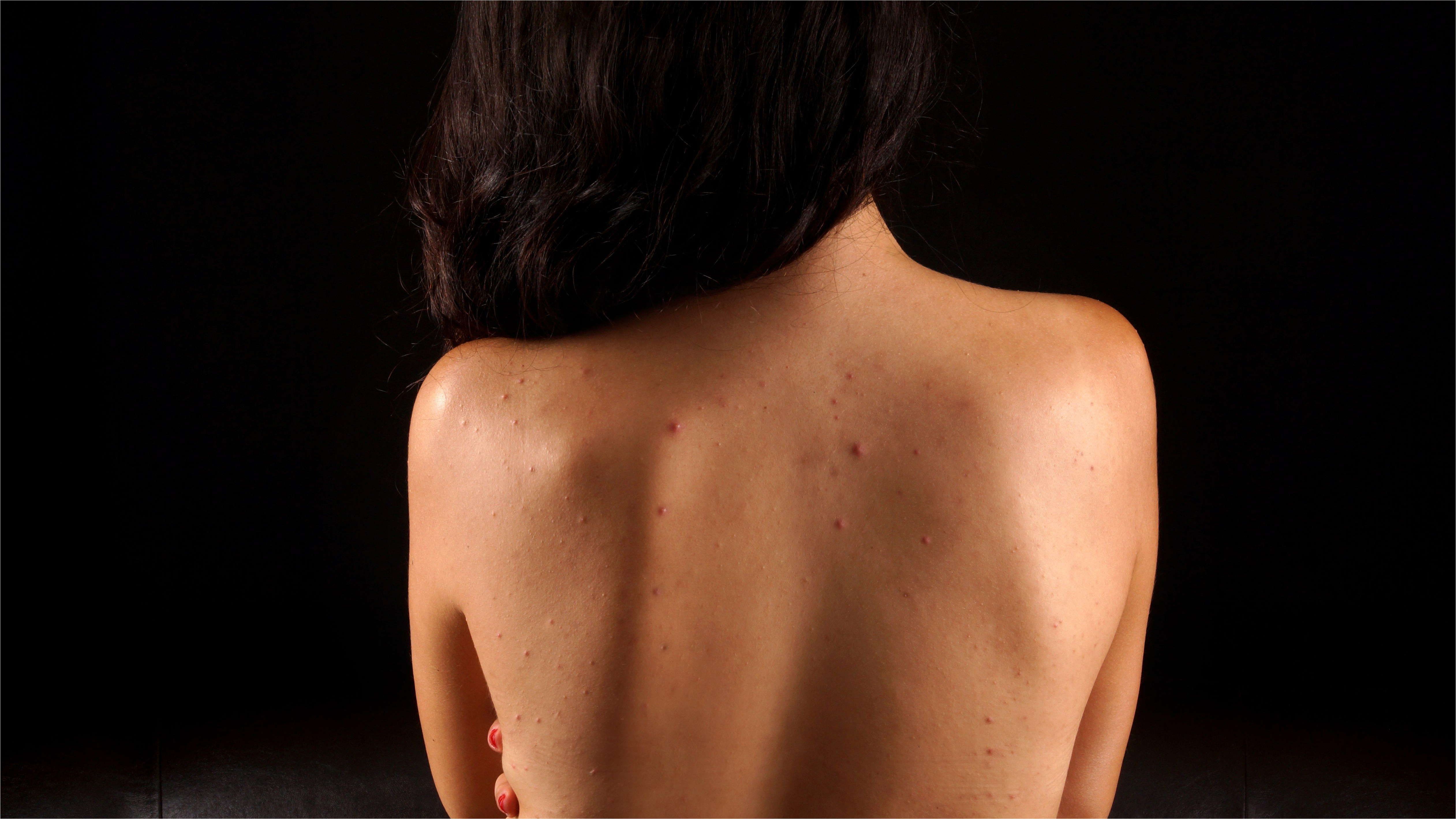
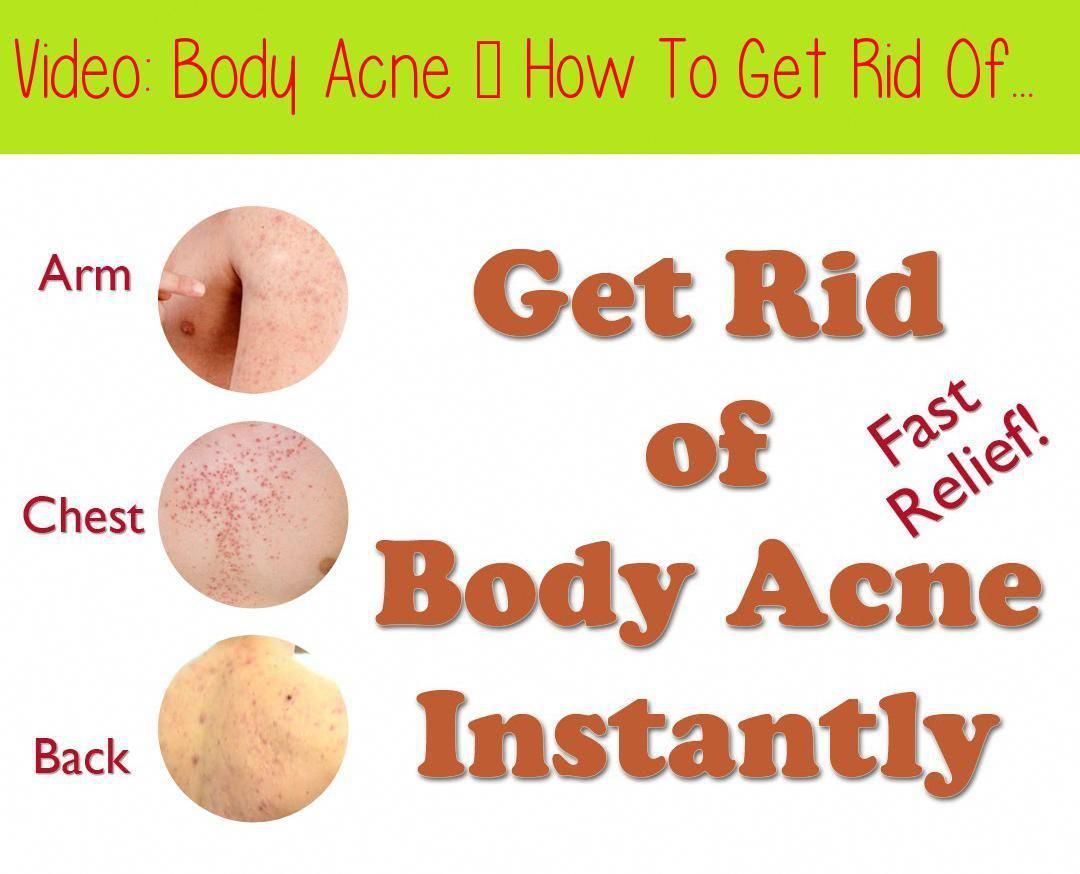 Most often they lead to this:
Most often they lead to this: Due to poor ventilation, sweat is released more actively. It remains on the skin and, like fat, improves the well-being of microbes.
Due to poor ventilation, sweat is released more actively. It remains on the skin and, like fat, improves the well-being of microbes.
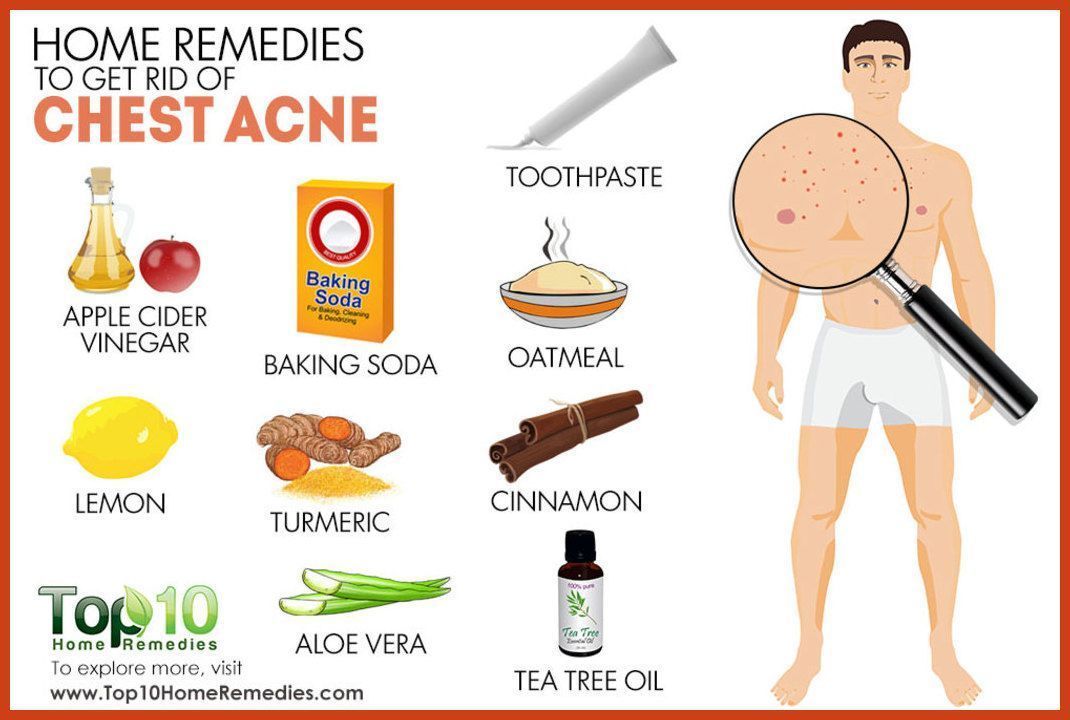
 If you’re just sweating, take a shower too, or at least rub your back with an oily skin toner.
If you’re just sweating, take a shower too, or at least rub your back with an oily skin toner.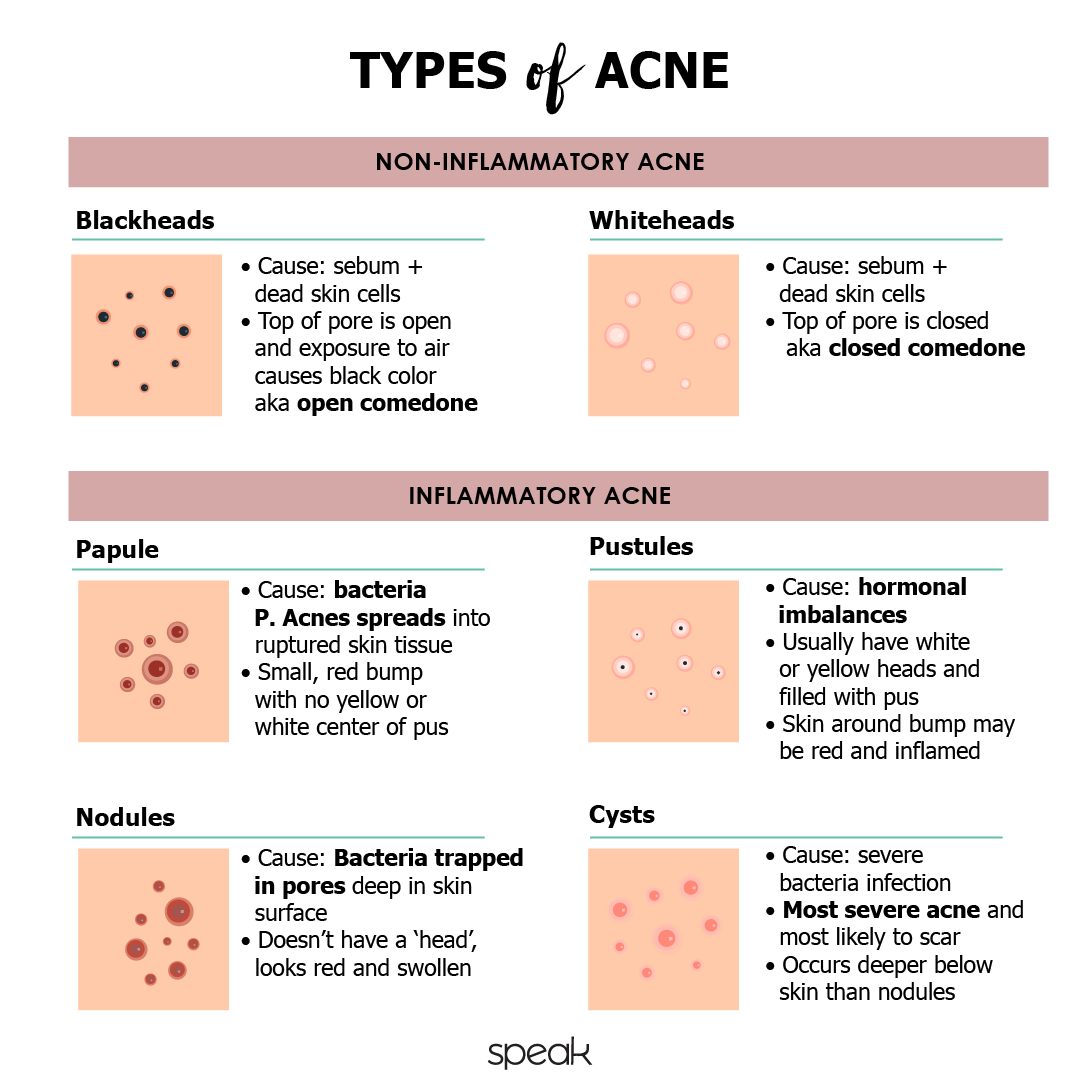
 He may be able to suggest an alternative drug for you.
He may be able to suggest an alternative drug for you.
